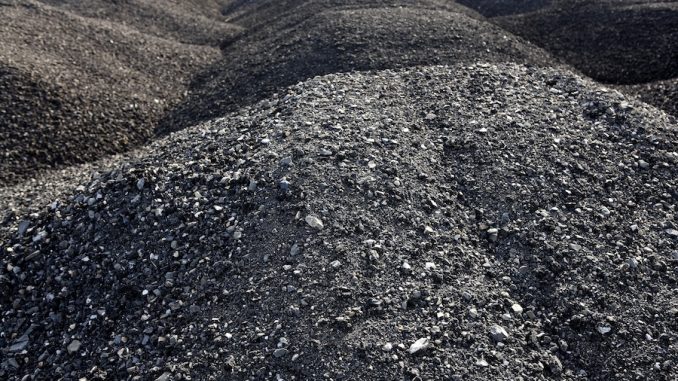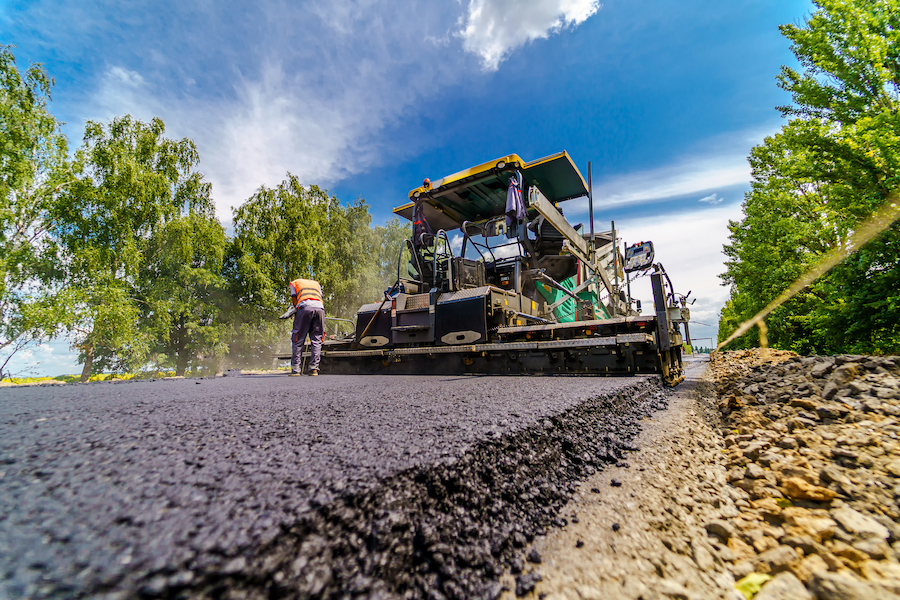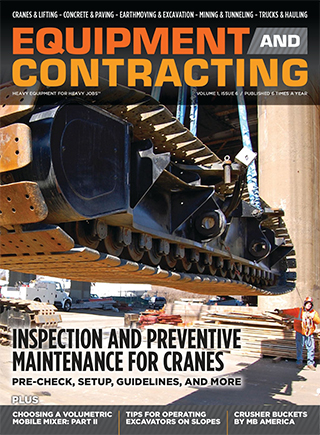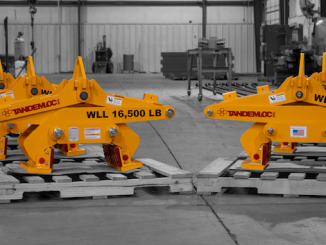
View the complete article here.
An asphalt mix—often referred to as asphalt concrete—is a composite material commonly used to surface roads, parking lots, airports, and the core of embankment dams. It consists primarily of aggregates, binder, and filler that are mixed together in precise proportions. The aggregates—typically stones, sand, and gravel—make up the bulk of the mixture and provide its structure and strength. The binder, usually bitumen derived from crude oil, acts as a glue to bind the aggregates together. Lastly, the filler—which can be anything from stone dust to hydrated lime—is used to fill the voids and provide additional cohesion.
The exact composition of an asphalt mix can vary based on its intended use and the specifications required by the project. It’s engineered to withstand different loads, temperatures, and weather conditions—making it a versatile material for many types of construction and repair work.
Comparison of the Three Primary Types of Asphalt Mixes
- Hot Mix Asphalt (HMA):
- Production: HMA is produced by heating the asphalt binder to decrease its viscosity. The aggregates are also dried to remove moisture before being mixed with the hot binder. This mixture is then transported to the construction site while still hot and pliable.
- Use cases: It is designed for high-traffic areas such as highways and racetracks due to its ability to withstand heavy loads and high temperatures.
- Advantages: HMA offers durability, resilience, and an ability to be laid down in thick layers—which is beneficial for heavy-duty surfaces.
- Warm Mix Asphalt (WMA):
- Production: WMA is manufactured at temperatures 30 to 120 degrees Fahrenheit lower than that of HMA, using additives or foaming processes to ensure the binder coats the aggregate.
- Use cases: WMA is suitable for a variety of environments and is increasingly used because it allows for longer haul distances and extended paving seasons.
- Advantages: The lower production temperatures lead to reduced fuel consumption and greenhouse gas emissions. It also improves working conditions by reducing exposure to fumes.
- Cold Mix Asphalt:
- Production: Unlike HMA and WMA, cold mix asphalt is produced by emulsifying the bitumen in water before mixing it with the aggregate. This emulsion does not require the aggregate to be heated, allowing the mix to be used at ambient temperatures.
- Use cases: Cold mix asphalt is typically used for low-traffic areas, repair work, and patching—especially in cold weather when hot mix would cool too quickly to be workable.
- Advantages: It is more flexible than hot mix, can be stored for longer periods, and is workable under more diverse weather conditions—making it convenient for quick repairs.
Hot Mix Asphalt (HMA)
Hot Mix Asphalt (HMA) is a blend of various sizes of aggregate particles and asphalt cement. The aggregates in HMA consist of crushed rock, gravel, or slag. These are combined in different sizes for the necessary gradation, with finer aggregates filling the spaces between larger ones to create a denser final product. The asphalt cement, a petroleum product, acts as a binder to hold the aggregates together. During production, these materials are heated to a high temperature—typically between 300°F and 350°F (150°C and 175°C)—ensuring the asphalt cement is fully liquid to coat the aggregate particles effectively.
One of the key advantages of HMA is its ability to create a durable and long-lasting road surface capable of withstanding various stresses, such as heavy traffic and extreme weather conditions. When properly designed and laid—HMA provides a smooth, safe, and quiet ride—making it a preferred choice for major roadways.
Typical applications of HMA include:
- Highways and interstates, where durability and performance under heavy traffic are critical.
- Airport runways, which demand a material capable of supporting the weight of airplanes and the associated shear forces.
- Race tracks, where the smoothness of the surface affects both safety and speed.
- Driveways and parking lots that require a cost-effective and reliable pavement solution.
Subtypes of HMA and Their Specific Uses
HMA can be further categorized into several subtypes, each designed for specific uses:
- Dense-graded mixes: These are the most commonly used HMA and include continuous, gap, and open-graded types. They are designed for general use and are versatile for various layers of pavement structures, from the surface to the base layers.
- Stone matrix asphalt (SMA): SMA is known for its high stability and durability due to a strong stone-on-stone contact after compaction. It’s used in high-stress environments like intersections, steep grades, and in areas with slow-moving traffic where the surface can deform.
- Open-graded friction course (OGFC): This type of HMA has fewer fines and more air voids, allowing water to drain through the surface layer—reducing splash and spray in wet weather and improving tire grip. It’s typically used as a surface layer.
- Permeable pavement: Similar to OGFC, permeable pavement is designed to allow water to pass through—reducing run-off and improving water quality. It’s ideal for parking lots and light traffic areas with environmental concerns.
- Superpave: Standing for Superior Performing Asphalt Pavements—this mix design system considers traffic speed and volume, climate, and subgrade materials to create a custom mix for a specific location’s needs. It’s increasingly used in road construction projects for its versatility and performance.

Warm Mix Asphalt (WMA)
Warm Mix Asphalt (WMA) technologies have significantly evolved over the past decade, allowing for asphalt to be produced and placed at temperatures as much as 50 to 100 degrees Fahrenheit lower than traditional Hot Mix Asphalt (HMA). This is achieved through the use of organic additives, chemical additives, or water-based foaming processes. The additives allow the asphalt binder to adequately coat the aggregate at lower temperatures, which also means the mix is less viscous and can be compacted more easily at lower temperatures.
In terms of application, WMA can be used in the same environments and under the same traffic conditions as HMA. However, the lower production temperatures extend the paving season and allow for longer haul distances because the mix retains its workability for a longer period. In addition, WMA’s improved workability means it can be compacted with less effort—reducing the amount of time needed to achieve proper density during the paving process.
Environmental and Operational Benefits of WMA
The reduced production temperatures associated with WMA lead to several environmental benefits, including a substantial decrease in fuel consumption and a corresponding reduction in greenhouse gas emissions. There are also fewer emissions of fumes and odors, which not only benefits the environment but also improves working conditions for paving crew members.
From an operational standpoint, WMA technologies allow for earlier opening to traffic—which minimizes construction-related congestion and associated emissions from idling vehicles. WMA also offers the possibility of extending the paving season into cooler months, which can be particularly beneficial in colder regions.
Cold Mix Asphalt
Cold Mix Asphalt (CMA) is distinct from its hot mix counterparts due to its unique property of being usable at ambient temperatures. It is formulated using water-based emulsified asphalt, which coats the aggregate without the need for high temperatures. This property gives CMA its workable and malleable nature directly from the stockpile, without requiring reheating. The mixture is created by blending the asphalt binder with the aggregate at ambient temperatures, as opposed to the heating process necessary for hot mix asphalt.
The emulsion present in CMA breaks upon compaction, causing the mix to take on a denser form and begin to behave similarly to hot mix asphalt. However, the full curing of CMA can take longer—depending on environmental conditions, with the evaporation of water from the emulsion being a critical part of the curing process.
Situations Where Cold Mix Asphalt is the Best Choice
Cold Mix Asphalt is particularly useful in scenarios where hot mix asphalt would not be practical or cost-effective. Some of the ideal situations for CMA use include:
- Emergency repairs: CMA can be applied directly from the container to fill potholes, cracks, and other pavement failures—making it perfect for emergency repairs, especially in cold weather when hot mix plants are not operational.
- Remote locations: For areas where hot mix plants are too far away, CMA can be a more feasible option since it does not need to be kept hot during transport.
- Low-traffic areas: Roads with low traffic volumes may not necessitate the durability of hot mix asphalt, making the more cost-effective CMA a suitable alternative.
- Winter paving: CMA can be used for paving or repairs during colder months when it’s not possible to lay HMA.
- Utility cuts: For temporary surface restorations after utility repairs—CMA provides a quick, effective solution.
Limitations of Cold Mix Asphalt
Despite its versatility and convenience—Cold Mix Asphalt is not without its limitations, which include:
- Durability: CMA is not as durable as hot mix asphalt, making it unsuitable for high-traffic roads and permanent repairs.
- Curing time: The mixture takes longer to cure completely, which can delay the time before the pavement can be opened to heavy traffic.
- Surface finish: The final surface of CMA is often not as smooth or stable as that provided by hot mix asphalt, which can be a concern in terms of ride quality and long-term performance.
- Temperature sensitivity: In warmer climates, CMA can become too soft—which can lead to deformation under traffic.

Performance-Grade Asphalt Mixes
Stone Matrix Asphalt (SMA) is a type of high-strength, performance-grade asphalt mixture that provides superior durability due to its high aggregate content and a rich mortar binder. The structure of SMA is significantly different from traditional asphalt mixtures because it relies on stone-on-stone contact to provide strength and resistance to deformation. This matrix of coarse aggregate forms a strong framework that prevents rutting and allows SMA to hold up against heavy traffic loads and extreme pressures.
The binder in SMA is typically a modified bitumen, which includes a polymer or fibrous additive to increase its resistance to wear and weathering. The enhanced binder content, combined with a stable aggregate structure, also gives SMA its remarkable ability to resist cracking. In addition, the voids in the mineral aggregate are filled with a mastic made up of fines, fiber, and asphalt cement—which further enhances durability and longevity.
Introduction to Superpave and Its Custom Design Approach for Varying Conditions
Superpave, which stands for Superior Performing Asphalt Pavements, is not just an asphalt mix but a complete system for pavement design. It was developed to create pavements that would perform better over time and under varying traffic and environmental conditions. Superpave takes into account the traffic volume and speed, climate, and subgrade materials to tailor the asphalt mix for the specific conditions it will face.
The Superpave system includes a series of tests and criteria for selecting the aggregate and binder types. It also utilizes a gyratory compactor to simulate field compaction during mix design, providing a more realistic idea of how the mix will perform post-construction. One of the key components of Superpave is the Performance-Grade (PG) asphalt binder system, which classifies binders based on the temperature ranges they can endure—ensuring the final pavement can resist both high-temperature rutting and low-temperature cracking.
The custom design approach of Superpave allows for the engineering of asphalt mixes that are more resistant to rutting, fatigue, and thermal cracking. It results in longer-lasting pavements that require less maintenance over their lifespan, making Superpave a cost-effective choice for long-term infrastructure investment.
Specialty Asphalt Mixes by Application
Porous asphalt is a specially designed pavement with an open-graded structure that allows water to pass through the asphalt into a recharge bed and infiltrate into the soil below. This innovative pavement solution effectively manages stormwater, significantly reducing runoff and promoting groundwater recharge. The interconnected voids in the asphalt allow for a flow rate that can handle even heavy storms without the water pooling on the surface.
There are numerous environmental benefits of porous asphalt. It helps to filter contaminants from the water, improves the quality of stormwater runoff, and can reduce the need for traditional stormwater infrastructure. Porous asphalt is particularly useful in parking lots, low-traffic roads, walkways, and other urban areas where managing surface water is a challenge.
Quiet Pavement Solutions for Noise Reduction
Quiet pavement technology addresses one of the common complaints about asphalt roads—traffic noise. This technology involves the use of fine-graded asphalt mixes or modified surfaces to create a pavement that absorbs sound waves rather than reflecting them.
One approach to creating quieter roads is the use of Stone Matrix Asphalt (SMA) or Open-Graded Friction Course (OGFC) layers. The stone-on-stone contact in SMA reduces the air voids and, consequently, the noise generated by tire-pavement interaction. OGFC, with its larger air voids, acts as a noise absorber—decreasing the volume of road noise heard by nearby residents.

Recycled Material Asphalt Mixes
Recycled Asphalt Pavement (RAP) is a material obtained by milling or removing the existing asphalt from roads and reprocessing it to be used in new asphalt mixes. The use of RAP plays a significant role in sustainable construction practices. It reduces the need for virgin materials, conserves landfill space, and saves money on construction costs. In addition to being environmentally friendly, RAP can improve the performance of new asphalt mixes by providing additional durability.
The integration of RAP into new pavement is a well-established practice, with many transportation departments having guidelines on the percentage that can be used without compromising the quality of the pavement. RAP is often processed to the same size as the aggregate it’s replacing, ensuring consistent quality and performance in the finished product.
Benefits of Incorporating Recycled Asphalt Shingles (RAS) in New Mixes
Recycled Asphalt Shingles (RAS) are another valuable resource in asphalt production. Shingles from roof tear-offs and manufacturer’s waste can be ground up and added to new asphalt mixes, providing similar benefits as RAP. The asphalt in shingles is of a very high quality and includes fine aggregate, which can enhance the mix.
The use of RAS in new asphalt mixes can significantly reduce the cost of the mix by replacing part of the more expensive virgin asphalt binder and fine aggregate. This practice also diverts waste from landfills, contributing to the sustainability of construction projects.
Choosing the Right Asphalt Mix
Choosing the right asphalt mix for a project is critical for ensuring long-term performance and sustainability. The selection process should start with a thorough analysis of several factors:
- Traffic levels: Understanding the volume and type of traffic, including the weight and frequency of vehicles, is crucial. Heavier and more frequent traffic requires a more robust asphalt mix to resist rutting and wear.
- Environmental conditions: The local climate, including temperature extremes and precipitation patterns, will affect the choice of asphalt mix. Materials need to be selected for their ability to perform in the expected conditions—whether it’s heat, cold, or moisture.
- Project goals: The specific goals of the project—such as longevity, noise reduction, water management, or use of recycled materials—will guide the selection of the asphalt mix. Each project may prioritize different aspects of the pavement’s performance.
The Process of Consultation with Engineers and Experts to Select the Mix
Selecting the optimal asphalt mix is a collaborative effort involving various stakeholders. The process typically includes:
- Preliminary assessment: Gathering all relevant data on traffic patterns, environmental conditions, and project requirements.
- Engagement of experts: Civil engineers, pavement specialists, and material scientists are consulted to analyze the data and provide recommendations.
- Mix design testing: Different asphalt mixes may be tested in a lab setting to assess their performance in simulated conditions that mimic the expected real-world environment.
- Cost-benefit analysis: Each potential mix is evaluated for its cost-effectiveness, taking into account not just the initial investment but also the expected maintenance and lifecycle costs.
- Final selection: The mix that best aligns with the project’s goals and meets the performance criteria is selected. This decision is made in consultation with all stakeholders—including clients, engineers, and contractors.
- Documentation and approval: The chosen mix design is documented in detail, and all necessary approvals are secured before proceeding with production and paving.
By carefully considering these factors and collaborating with experts, project managers can ensure that the right asphalt mix is chosen—paving the way for successful and durable pavement construction.
View the complete article here.
What are the key types of asphalt mixes and their applications?
The primary types include Hot Mix Asphalt (HMA), Warm Mix Asphalt (WMA), and Cold Mix Asphalt, each designed for specific use cases such as high-traffic areas, diverse weather conditions, and cold-weather repairs.
How does the selection process work when choosing the right asphalt mix for a project?
The process involves assessing factors like traffic levels, environmental conditions, and project goals, consulting with experts, conducting mix design testing, performing cost-benefit analysis, and obtaining necessary approvals for the chosen mix.












































